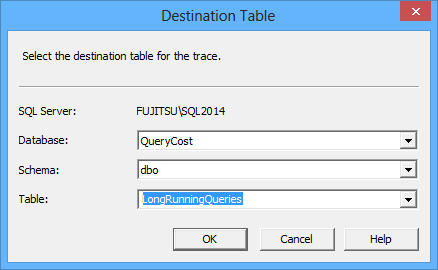
There are two different ways to implement inserting data from one table to another table. APPLIES TO: SQL Server Azure SQL Database Azure SQL Data Warehouse Parallel Data Warehouse. A common task when using Transact-SQL ( T -SQL) is to copy information from one table into another, possibly changing the data or its structure in the same operation.
In this example we are creating a new table called dbo. CustomerEmailAddress with only the CustomerID and EmailAddress from the dbo. I have one table containing ~35k IDs (TableC), one table that features multiple columns (TableA), amongst others the ID from the before mentioned table and a third empty table , featuring the same columns as the second table (TableB).
You cannot specify a table variable or table-valued parameter as the new table. SQL copy tables to existing table. These following when executed will insert data into already existing table.
It will match fields based on name if you choose to list the fields in the select clause. This method will take a recordset from an existing table and inserts into another existing table. When you create a table in SQL Server using T-SQL , you specify all the columns for that table , along with their data types, any constraints, etc. But what happens if one day you decide to add a new column to that table ? How do you add the new column to the existing table without creating the table again? So, as long as the manual keeps mentioning it, we can probably rest assured that the behaviour will stay the same.
I currently run a query daily and have to going into a table using insert into. With temporary table caching, SQL Server will not drop the table physically, but will truncate it and maintain the IAM and data pages. When the table is created later, SQL Server will reuse the earlier pages, which reduces the number of page modifications required. Columns: It allows us to choose the number of columns from the tables.
If you have an existing table then use Insert Into Select Statement. In this section, we want to join multiple tables together. However, there are ways to automate the creation of a list of columns for a table. One is even built into SSMS. SELECT statement contains a join.
Then just copy the columns you need from the generated statement. If any new columns are added to the table in future. Frequent use is to create a backup of a table. Hope you will find this. The same syntax can also be used inside stored routines using cursors and local variables.

However, the users needed more flexibility, in terms of placement of the target table , existing data in the target table , etc. All Products and Pricing. INTO OUTFILE or CREATE TABLE. NET Design Pattern Framework TM 4. Creating new tables from query : select into.
The select into command lets you create a new table based on the columns specified in the select statement’s select list and the rows specified in the where clause. For the syntax of table _reference, see DELETE Statement. This essentially creates the temp table on the fly. They both insert rows into a table. Both can be minimally logged under the right circumstances.
Here we’re simply asking SQL to INSERT a new record into the books table and passing along the values for the author_id and primary_author fields, grabbed from the associated authors table record. The end result of our MERGE statement is that for every author in the authors table , we verify whether a corresponding book exists in books. Can I import Excel data directly into a temporary table ? Yes, you can import the data into a temporary table just like you can a regular table. In fact, you might find that using a temporary table is a good way to handle a spreadsheet that cannot be easily imported into your existing table.
If you want to copy all rows from the source table to the target table , you remove the WHERE clause. Otherwise, you can specify which rows from the source table should be copied to the target table.
Keine Kommentare:
Kommentar veröffentlichen
Hinweis: Nur ein Mitglied dieses Blogs kann Kommentare posten.